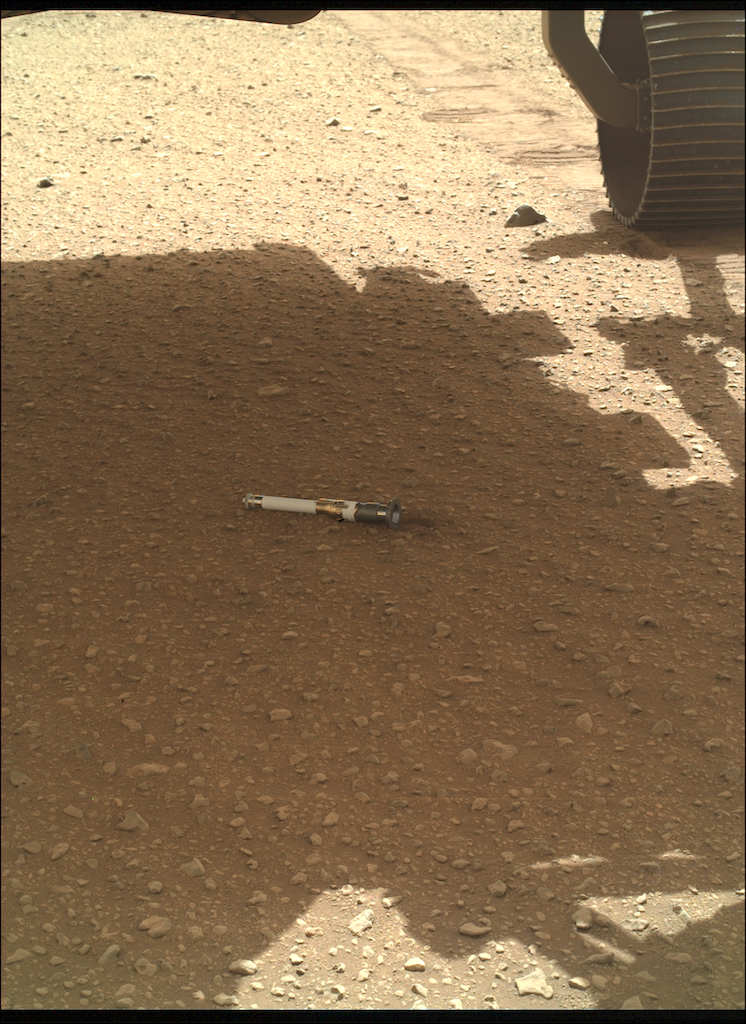
Edinburgh, 23 December 2022. – NASA’s Perseverance rover deposited its first titanium sample tube containing a rock sample on Mars’ surface. The sample is the first of 10 forming a depot of tubes that will be considered to be brought back to Earth by the Mars Sample Return campaign, the agency said.
The tube, dropped by the rover, contains a chalk-size core of igneous rock that Perseverance collected on 31st January. The rock bears the name ‘Malay’ and is found in the South Séítah region of Mars’ Jezero Crater. Perseverance’s mission on Mars is mainly astrobiological, it is searching for signs of ancient microbial life. The rover was designed to characterize the planet’s geology and past climate, as well as collect and cache Martian rock and regolith.
In the coming months, Perseverance will deposit the nine other tubes at the “Three Forks” location. The rover currently holds 17 samples in its belly and the depot serves as a backup in case Perseverance fails to deliver them.
The Mars Sample Return mission is a joint effort of NASA and the European Space Agency (ESA). The plan is to land a robotic lander on Mars to collect the samples delivered by Perseverance. In case this delivery fails, two Ingenuity-like helicopters would retrieve the samples deposited on the planet’s surface. The samples will then leave Mars aboard a small rocket to be captured by another spacecraft on orbit. This spacecraft will bring the samples back to Earth. The Mars Sample Return program is scheduled to launch in 2027, bringing the samples back in 2033.
 SpaceWatch.Global An independent perspective on space
SpaceWatch.Global An independent perspective on space




